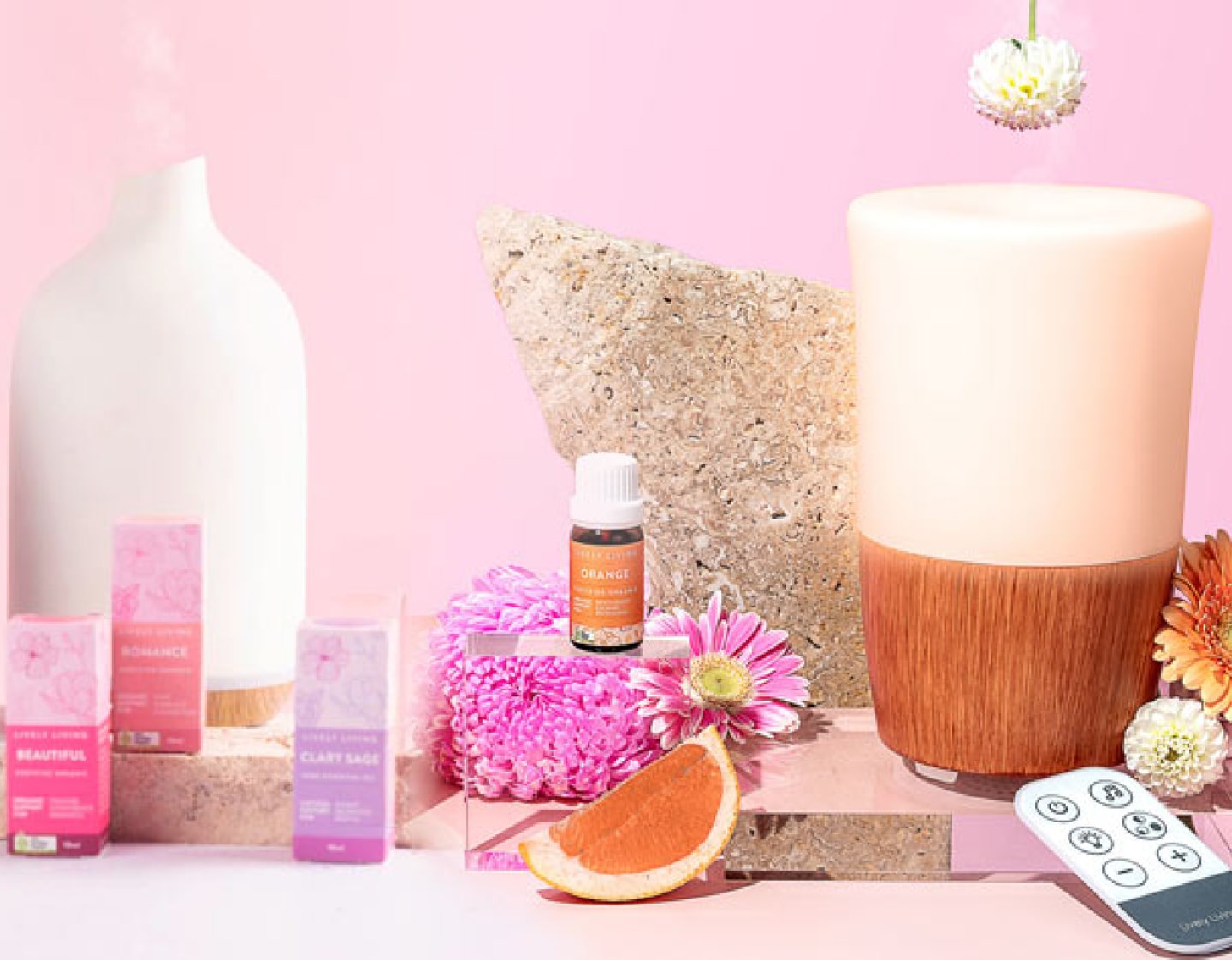Exploring Sandalwood Oil Benefits for Skin and Health
You've likely heard the buzz around essential oils. Maybe you diffuse them, add them to your skincare, or just enjoy their calming scents. Among these powerful plant extracts, sandalwood oil holds a special place, revered for centuries across various ancient cultures. It's more than just a pleasant fragrance; understanding sandalwood oil benefits can genuinely enhance your well-being.
Many people are exploring natural solutions for skin concerns, stress relief, and overall wellness. If you find yourself seeking effective, plant-based options, you're not alone. This ancient oil, often known by its scientific name Santalum album, offers a surprising range of applications backed by both traditional medicine and modern science.
You'll learn precisely how these sandalwood oil benefits work and how you can use them.
Table Of Contents:
- Understanding Sandalwood Oil: Types and Composition
- Skin Health Reimagined: Sandalwood Oil Benefits for Your Complexion
- Mental Clarity and Emotional Well-being: The Aromatherapy Advantage
- Beyond Skin and Mind: Exploring Other Sandalwood Oil Benefits
- How to Use Sandalwood Oil Safely and Effectively
- Precautions and Potential Side Effects
- FAQs about sandalwood oil benefits
- Conclusion
Understanding Sandalwood Oil: Types and Composition
Learning about the oil itself provides a foundation for understanding its benefits. Genuine sandalwood oil comes from the heartwood and roots of mature sandalwood trees. The most prized variety is often Indian sandalwood (Santalum album), sourced primarily from the revered Indian sandalwood tree or East Indian sandalwood tree.
This East Indian sandalwood type is frequently seen as the benchmark because of its high concentration of beneficial compounds. However, sourcing true Indian sandalwood oil faces sustainability challenges due to overharvesting, making ethical sourcing very important. Finding a reputable supplier helps get a quality sandalwood oil product.
Other types exist, such as Australian sandalwood (Santalum spicatum), including Western Australian sandalwood, and Hawaiian sandalwood (Santalum paniculatum). While these also offer advantages, their chemical composition and scent profile differ somewhat from East Indian sandalwood oil. You might also hear about African sandalwood (Osyris lanceolata), though its use is less common in aromatherapy markets today.
The effectiveness of sandalwood essential oil comes from its complex chemistry. Principal components include alpha-santalol and beta-santalol; these sesquiterpene alcohols give sandalwood its characteristic woody scent and many therapeutic properties. The specific ratio of these compounds varies depending on the species and origin.
Research highlights that the compound alpha-santalol, especially prominent in Santalum album oil, greatly contributes to its anti-inflammatory, antimicrobial, and calming effects. These natural chemicals make the oil powerful for a wide range of uses.
Skin Health Reimagined: Sandalwood Oil Benefits for Your Complexion
Your skin faces daily challenges from pollution, stress, and environmental factors. This exposure can lead to breakouts, irritation, and signs of premature aging. Sandalwood essential oil provides a gentle yet potent natural method for achieving clearer, healthier skin.
Combatting Acne and Breakouts
Dealing with pimples and blemishes can be frustrating for any skin type. Sandalwood oil contains natural antiseptic and anti-inflammatory properties. These qualities help fight acne-causing bacteria while soothing the redness and swelling linked to breakouts.
This is why many high-quality skin care products and personal care items include it. Adding it to your skin care routine can help stop new pimples from appearing. It tackles bacterial growth often resulting from daily contact with dirt and environmental pollutants.
Unlike some strong acne treatments that can dry or irritate, sandalwood offers a milder approach. Using sandalwood album derived oil can be particularly beneficial for sensitive skin.
DIY Pimple Paste: Need a targeted spot treatment? Try this simple mix recommended by Beauty Glimpse.
- Mix 1 tablespoon of turmeric powder with 3-7 drops of sandalwood essential oil (adjust based on skin sensitivity).
- Add a little rosewater (or spring water for dry skin) to form a paste.
- Apply a thin layer to affected areas or your whole face.
- Let it dry for 20-30 minutes, then rinse with lukewarm water.
- Use 2-3 times a week. Turmeric adds extra anti-inflammatory power.
Fading Dark Spots and Evening Skin Tone
Hyperpigmentation, dark spots, and uneven skin tone can arise from sun exposure, inflammation, or old blemishes. Sandalwood oil possesses mild exfoliating qualities that assist in lifting away dead skin cells. This action helps reveal brighter, more luminous skin underneath.
Its anti-inflammatory capabilities also help soothe the skin, reducing redness and potentially preventing further pigmentation problems. Regular application as part of treating skin issues can lead to a more balanced and radiant complexion. It helps lessen the appearance of unwanted spots over time.
Soothing Inflammation and Irritation
Skin inflammation can appear as redness, itching, rashes, or specific skin conditions like eczema (atopic dermatitis) and psoriasis. Sometimes inflammation is linked to conditions like psoriatic arthritis. Sandalwood oil's well-studied anti-inflammatory properties offer noticeable relief for many people.
It assists in calming irritated skin and lessening discomfort associated with these conditions. Research suggests sandalwood album oil, sourced from the Santalum album tree, shows potential in clinical trials for treating skin conditions involving inflammation, such as atopic dermatitis and psoriasis. It can also soothe insect bites, minor cuts, and general skin sensitivity, making it useful for overall treating skin concerns.
DIY Soothing Mask: For general redness or itchiness, try this simple blend:
- Combine 1 teaspoon turmeric powder, 3-7 drops sandalwood oil, and 1 teaspoon lime juice.
- Mix into a fine paste.
- Apply generously to affected areas and leave for 30-40 minutes.
- Rinse gently with lukewarm water and pat dry.
While itchiness might decrease relatively quickly, reducing inflammation often requires consistent use over time.
Deep Hydration and Moisture Retention
Dry, dehydrated skin can feel uncomfortably tight and appear dull. Sandalwood essential oil is remarkably effective at moisturizing without leaving a heavy or greasy residue. It supports the skin in maintaining its natural moisture balance.
This results in skin that feels soft, supple, and well-hydrated. Because it moisturizes without necessarily increasing oiliness, it's appropriate for various skin types, including combination skin. Proper hydration helps maintain the skin's protective barrier function.
DIY Dry Skin Hydrator: A straightforward yet beneficial mask:
- Mix a few drops of sandalwood oil with a teaspoon of raw honey.
- Apply generously to clean skin.
- Leave on for 20-30 minutes before rinsing with tepid water.
Anti-Aging Effects and Antioxidant Power
Exposure to free radicals generated by pollution and UV radiation speeds up skin aging, contributing to wrinkles and loss of firmness. Sandalwood oil is packed with antioxidants. These beneficial compounds help counteract harmful free radicals.
By shielding skin cells from oxidative stress, sandalwood oil promotes a more youthful look. Studies indicate it might help diminish signs of aging, like fine lines, and enhance skin elasticity. Its natural astringent qualities also add to a firmer appearance.
DIY Anti-Wrinkle Mask: To address fine lines:
- Whisk together an egg yolk, a teaspoon of honey, and a few drops of sandalwood oil.
- Apply the paste to areas with wrinkles or your entire face.
- Leave for 20-30 minutes, then rinse gently.
Balancing Oil Production and Refining Pores
For individuals managing oily skin, achieving balance is important. Sandalwood oil functions as a natural astringent. This quality means it can gently help tighten tissues and reduce the appearance of enlarged pores.
Crucially, it aids in regulating sebum production without stripping the skin of essential moisture. This action can diminish unwanted shine and possibly reduce breakouts associated with excess oil. It encourages a healthy equilibrium for your skin's natural oils.
Mental Clarity and Emotional Well-being: The Aromatherapy Advantage
The health benefits of sandalwood oil reach beyond skin care. Its unique, warm, and woody fragrance significantly influences the mind and emotions. This impact makes it a valued component in aromatherapy and various spiritual practices.
Promoting Relaxation and Reducing Stress
Feeling overwhelmed or stressed? The aroma of sandalwood oil is celebrated for its calming effect. Inhaling its scent can help soothe the nervous system and foster a sense of tranquility.
It promotes relaxation without inducing drowsiness, which makes it suitable for unwinding after a demanding day or during tense moments. Its sedative properties are mild but noticeable.
Easing Anxiety and Enhancing Mood
Studies have investigated sandalwood's capacity to lessen feelings of anxiety. One pilot study noted lower blood pressure and cortisol levels among participants after they inhaled a blend of sandalwood and lavender oil. Another suggested that aromatherapy involving sandalwood helped ease anxiety in women about to undergo a breast biopsy, relevant in contexts concerning breast cancer patient support.
Although more comprehensive research is required, these initial findings support its uses in traditional medicine. The scent can encourage emotional balance and lift one's spirits. Comparing different essential oil benefits reveals that many natural extracts, including various essential oil blends, possess mood-boosting potential.

Improving Focus and Mental Clarity
In addition to its calming effects, sandalwood essential oil is also believed to enhance concentration. Its grounding fragrance helps quiet distracting mental noise, improving the ability to focus. This quality explains its frequent use during meditation and prayer across many ancient cultures.
Whether you need to concentrate on work, studies, or mindfulness exercises, diffusing sandalwood oil can establish a helpful atmosphere. It assists in centering the mind and facilitating clear thinking. While options like CBD oil offer different approaches to mental wellness, sandalwood provides distinctive aromatic support.
Supporting Restful Sleep
Having trouble sleeping? The calming and sedative qualities of sandalwood oil can contribute to better rest. Using it in the evening, possibly diffused in your bedroom, can signal to your body that it's time to relax.
It aids in creating a peaceful setting ideal for falling asleep and might improve overall sleep quality. This natural method helps avoid the grogginess sometimes associated with pharmaceutical sleep aids. Considering different oil blends for sleep might also be a good idea.
Beyond Skin and Mind: Exploring Other Sandalwood Oil Benefits
Sandalwood's traditional uses suggest a broader spectrum of health benefits. While scientific confirmation is still developing for some applications, historical usage and preliminary studies indicate additional possibilities.
Traditional Medicine Systems
For centuries, sandalwood, particularly East Indian sandalwood, has been a vital component in traditional healing systems such as Ayurvedic medicine and Traditional Chinese Medicine (TCM). In these systems, chinese medicine practitioners used it for various conditions, from the common cold and urinary tract infections (tract infections) to issues impacting digestive health. Understanding the practices of traditional chinese healers gives context to its historical value.
Ayurvedic medicine frequently utilized sandalwood powder and paste for skin problems and appreciated its cooling effects. These long-established applications demonstrate its perceived flexibility across different health areas. Support for the urinary tract was another common historical application.
Wound Healing Properties
Sandalwood's antiseptic and anti-inflammatory properties suggest potential utility in caring for minor wounds. It might assist in cleansing wounds, guarding against infection, and encouraging the wound healing process. Proper wound healing is vital for preventing complications.
Fascinating research from 2014 discovered that human skin cells actually have olfactory receptors—similar to those used for smell—that respond to sandalwood. When these receptors were activated by a synthetic sandalwood odorant (mimicking al sandalwood compounds like alpha-santalol), it seemed to stimulate skin cell proliferation and migration. This suggests a direct cellular mechanism potentially contributing to its role in tissue repair.
While this is intriguing, more robust clinical trials are necessary to confirm these effects and establish practical applications for wound healing using sandalwood oil itself.
Antimicrobial and Antiviral Action
The essential oil demonstrates established antimicrobial properties. This means it can hinder the growth of certain bacteria and fungi. This capability supports its use for acne management and infection prevention in minor cuts and scrapes.
Some studies also suggest potential antiviral activity, although this area requires more research. These combined properties contribute to its protective effects on the skin and possibly other body systems. Further investigation is needed to pinpoint specific antimicrobial applications.
Potential Anticancer Effects
Recent research has focused on the compound alpha-santalol, found abundantly in sandalwood album oil, for potential anticancer effects. Laboratory (in vitro) and animal studies have examined its influence on various cancer cell lines. These include skin cancer, prostate cancer, breast cancer, bladder cancer, and types of oral cancer.
It is very important to note that this research is in its early stages. While the findings are promising, extensive further investigation, especially rigorous human clinical trials, is required to ascertain if sandalwood oil or its components could have a role in cancer prevention or treatment. Currently, it is not recognized as a proven therapy against cancer.
Respiratory Relief
Traditional medicine practices sometimes included sandalwood for respiratory complaints like coughs and colds. Its anti-inflammatory properties might be relevant here. Inhaling steam from water infused with a few drops of sandalwood oil (steam inhalation) could potentially soothe irritated airways, although definitive scientific proof is limited.
How to Use Sandalwood Oil Safely and Effectively
To experience the sandalwood oil benefits fully, correct usage is necessary. Essential oils are highly concentrated plant extracts, so proper dilution and application methods are vital for safety and effectiveness.
Topical Application
Avoid applying neat sandalwood oil (undiluted) directly to large skin areas, particularly if you have sensitive skin. Always dilute neat sandalwood with a carrier oil before topical use.
- Choosing a Carrier Oil: Good choices include jojoba oil, sweet almond oil, fractionated coconut oil, grapeseed oil, or rosehip oil. Select a carrier oil based on your skin type and personal preference; almond oil (especially sweet almond) is a popular option.
- Dilution Ratios: A general guideline is 1-2% dilution for facial use (6-12 drops of essential oil per ounce/30ml of carrier oil) and 2-4% for body application. Begin with a lower concentration, particularly if your skin is sensitive.
- Patch Test: Before using widely, performing a patch test is always a good idea. Apply a tiny amount of the diluted oil blend to a discreet spot (like the inner elbow), cover it, and wait 24-48 hours to check for any irritation or reaction.
- Massage: Add several drops of sandalwood oil to your preferred massage oil blend for a calming and skin-benefiting experience. Many pre-made massage oil blends already include sandalwood.
- Skincare Boost: Mix one or two drops into your current moisturizer, serum, or lotion immediately before application.
Aromatherapy Methods
Inhaling the aroma is one of the simplest ways to access sandalwood's mood-related benefits. Consider trying different essential oil blends featuring sandalwood.
- Diffusion: Add 3-5 drops of sandalwood essential oil to an ultrasonic diffuser filled with water. Operate it in your living area, bedroom, or meditation space to create a calming atmosphere.
- Steam Inhalation: Add 1-2 drops to a bowl of hot (not boiling) water. Lean carefully over the bowl, drape a towel over your head to trap the steam, and breathe deeply for a few minutes. This may help with congestion and provide a mini facial steam treatment.
- Direct Inhalation: Put a single drop on a tissue or cotton ball and inhale gently as needed. Avoid direct contact between the oil and your nasal passages.
Adding to Personal Care Products
You can enhance your existing care products or create your own DIY wellness products with sandalwood oil.
- Shampoo/Conditioner: Add a few drops to your bottle for potential scalp and hair benefits (shake well to mix).
- Bath: Combine 5-10 drops of sandalwood oil with a tablespoon of carrier oil (like sweet almond oil) or unscented bath salts first. Dispersing the oil helps it mix with the bathwater rather than floating on top. Add this mixture to warm bathwater for a deeply relaxing soak.
- DIY Products: Integrate East Indian sandalwood oil into homemade lotions, body butters, face masks, or natural cleansing oils. It adds both scent and therapeutic properties to your creations.
| Application Area | Recommended Dilution | Drops per 1 oz (30ml) Carrier Oil |
|---|---|---|
| Facial Skincare | 1 - 2% | 6 - 12 drops |
| General Body Massage | 2 - 4% | 12 - 24 drops |
| Targeted Use (e.g., spot treatment, acute issues) | Up to 5% (Use cautiously, short-term) | Up to 30 drops |
| Bath (Mixed with dispersant first) | 5 - 10 drops per bath | N/A |
Always begin with the lower end of the dilution range, particularly if you are new to essential oils or have sensitive skin. Consult a certified aromatherapist for personalized guidance.
Precautions and Potential Side Effects
While generally safe when used correctly, sandalwood oil can cause adverse reactions in some people.
- Skin Irritation: As noted, always dilute before topical application and perform a patch test. Undiluted or neat sandalwood oil is more likely to cause redness, itching, or a rash. Some reports suggest certain species like Western Australian or Hawaiian sandalwood might have slightly higher potential for irritation due to farnesol content, though this is generally mild.
- Allergic Reactions: Although uncommon, some individuals might be allergic to sandalwood oil. Stop use immediately if signs of an allergy appear (e.g., widespread rash, hives, breathing difficulties).
- Phototoxicity: Certain essential oils increase skin sensitivity to sunlight. While sandalwood is not typically considered highly phototoxic, it's sensible to avoid prolonged, direct sun exposure on skin areas recently treated with the oil, especially if using higher concentrations.
- Internal Use: Sandalwood essential oil is intended for external use only and should not be ingested.
- Pregnancy and Children: Speak with a healthcare professional or qualified aromatherapist before using sandalwood oil during pregnancy, while breastfeeding, or on young children due to limited safety data.
- Medical Conditions: If you have pre-existing health conditions, particularly kidney disease, or are taking medications, consult your doctor before incorporating sandalwood oil therapeutically.
Selecting a high-quality, authentic oil product is essential for both effectiveness and safety. Look for oil specifically identified as Santalum album oil (sandalwood album oil) if possible, though sustainably sourced Australian sandalwood is a good alternative. When you source sandalwood, choose reputable suppliers; some may offer benefits like free shipping.
Be mindful of sustainability issues surrounding the Indian sandalwood tree (and East Indian sandalwood tree). Opting for ethically harvested varieties supports conservation efforts. Quality wellness products often specify the origin and species.
FAQs about sandalwood oil benefits
What is sandalwood oil used for?
Sandalwood oil is widely utilized for its calming aroma in aromatherapy to ease stress and enhance focus. In skin care, it helps soothe inflammation, combat acne, moisturize dry skin, and diminish signs of aging. Historically, traditional medicine used it for various health issues, including colds and urinary tract infections.
Can I use sandalwood oil on my face?
Yes, you can use sandalwood oil on your face, but dilution is necessary first. Mix 1-2 drops with a teaspoon of a suitable carrier oil (like jojoba or sweet almond oil) or add a single drop to your facial moisturizer just before applying. Performing a patch test beforehand is recommended to check for sensitivity.
What are the disadvantages of sandalwood oil?
Potential drawbacks include skin irritation or allergic reactions, particularly if applied undiluted (neat sandalwood oil). Some individuals might find the scent too strong. Additionally, high-quality, authentic Indian sandalwood oil can be costly due to sustainability concerns related to the slow-growing sandalwood trees.
What are the spiritual benefits of sandalwood oil?
Spiritually, sandalwood oil is valued for its grounding and centering effects. It's frequently employed during meditation and prayer to help quiet the mind, sharpen focus, and promote a connection with one's inner self or spiritual dimension. Its fragrance is thought to encourage tranquility and emotional equilibrium, a practice seen in many ancient cultures.
Conclusion
Investigating sandalwood oil benefits unveils a multifaceted essential oil, rich in history yet highly relevant to contemporary wellness approaches. From soothing troubled skin and fostering a clear complexion to calming the mind and sharpening focus, its uses are broad. Whether integrated into skin care products, diffused for atmospheric benefit, or added to massage oil blends, it provides a natural means to find balance.
Always remember the significance of responsible sourcing when you source sandalwood, correct dilution practices, and patch testing to use it safely. Choosing quality care products containing genuine sandalwood ensures better results. Research continues to explore its full potential, but both traditional medicine wisdom and modern studies confirm the valuable health benefits of sandalwood oil for body and mind.














